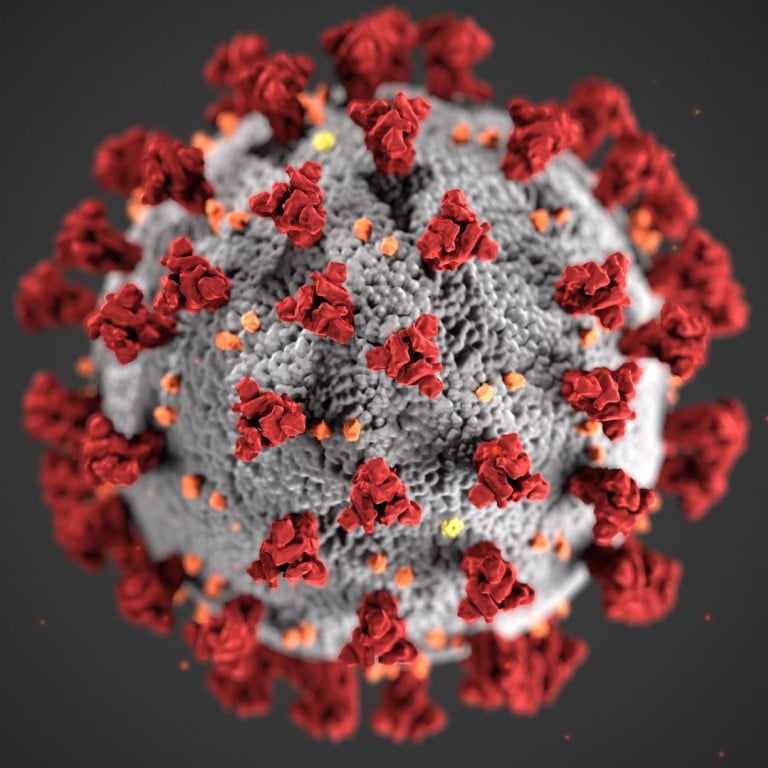
Coronavirus: Omicron still driving Covid-19 surges and worries in US, elsewhere
- New Covid-19 cases in the US averaged around 39,300 a day as of Tuesday – far lower than last winter but a vast undercount due to reduced testing and reporting
- Experts see the seeds of a widespread US wave and point to what’s happening in Japan, South Korea and Norway where variants have started a new wave
A year after Omicron began its assault on humanity, the ever-morphing coronavirus mutant drove Covid-19 case counts higher in many states in America just as people gathered for Thanksgiving. It was a prelude to a wave that experts expect to soon wash over the US.
Emergency doctor Nicholas Vasquez of Phoenix, Arizona said his hospital admitted a growing number of chronically ill people and nursing home residents with severe Covid-19 this month.
“It’s been quite a while since we needed to have Covid wards,” he said. “It’s making a clear comeback.”
Nationally, new coronavirus cases averaged around 39,300 a day as of Tuesday – far lower than last winter but a vast undercount because of reduced testing and reporting. About 28,000 people with Covid-19 were hospitalised daily and about 340 died.
Cases and deaths were up from two weeks earlier. Yet a fifth of the US population hasn’t been vaccinated, most Americans haven’t got the latest boosters and many have stopped wearing masks.
Meanwhile, the virus keeps finding ways to avoid defeat.
The Omicron variant arrived in the US just after Thanksgiving last year and caused the pandemic’s biggest wave of cases. Since then, it has spawned a large extended family of subvariants, such as those most common in the US now: BQ. 1, BQ. 1.1 and BA.5. They edged out competitors by getting better at evading immunity from vaccines and previous illness – and sickening millions.
European firms cry out for road map to exit crippling zero-Covid strategy
Some communities are being particularly hard hit right now. Tracking by the Mayo Clinic shows cases trending up in states such as Florida, Arizona, Colorado and New Mexico.
In Arizona’s Navajo County, the average daily case rate is more than double the state average. Dr James McAuley said 25 to 50 people a day are testing positive for coronavirus at the Indian Health Service facility where he works. Before, they saw just a few cases daily.
McAuley, clinical director of the Whiteriver Indian Hospital, which serves the White Mountain Apache Tribe, said they are “essentially back to where we were with our last big peak” in February.
Covid-19 is part of a triple threat that also includes flu and the virus known as RSV.
Dr Vincent Hsu, who oversees infection control for AdventHealth, said the system’s paediatric hospital in Orlando, central Florida is nearly full with kids sickened by these viruses. Dr Greg Martin, past president of the Society of Critical Care Medicine, sees a similar trend elsewhere.
Paediatric hospitals’ emergency departments and urgent care clinics are busier than ever, said Martin, who practices mostly at Grady Memorial Hospital in Atlanta. “This is a record compared to any month, any week, any day in the past,” he said.
Looking to the future, experts see the seeds of a widespread US wave. They point to what’s happening internationally – a BA.5 surge in Japan, a combination of variants pushing up cases in South Korea, the start of a new wave in Norway.
Some experts said a US wave could begin during the holidays as people gather indoors. Trevor Bedford, a biologist and genetics expert at the Fred Hutchinson Cancer Research Centre, said it could peak at around 150,000 new cases a day, about what the nation saw in July.
A new wave would be rough, said Dr. Mark Griffiths, medical director of the emergency department of Children’s Healthcare of Atlanta-Spalding Hospital. “So many systems are on the brink of just being totally overburdened that if we get another Covid surge on top of this, it’s going to make some systems crack.”
However, deaths are likely to be much lower than earlier in the pandemic. About 1 in 2,000 infections lead to death now, compared with about 1 in 200 in the first half of 2020, Bedford said.
Doctors say the best protection against the bubbling stew of subvariants remains vaccination. And officials said Americans who got the new combination booster targeting Omicron and the original coronavirus are currently better protected than others against symptomatic infection.


